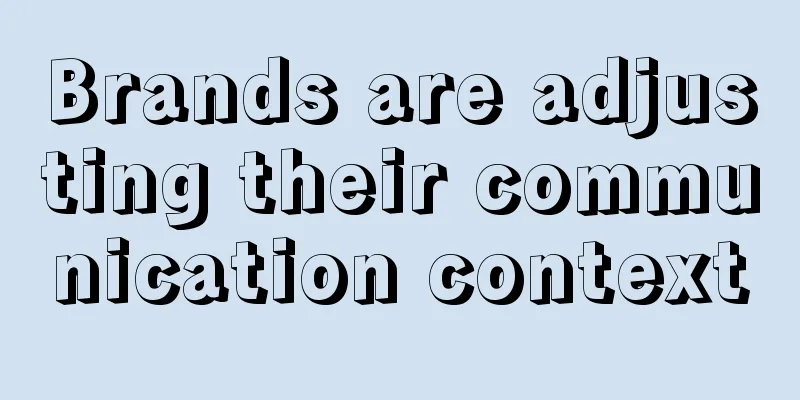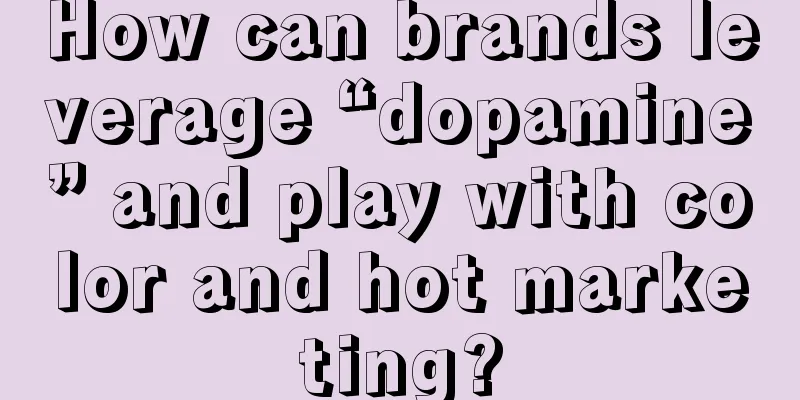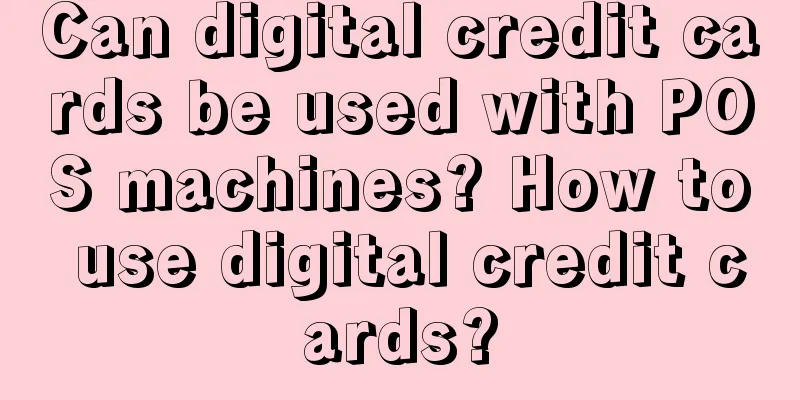Brands are adjusting their communication context

During the Dragon Boat Festival holiday, I met a friend who works in marketing. He works for a consumer goods company, where he is mainly responsible for influencer management and content marketing. He also works on projects related to theme communication strategies. He said: It is difficult to communicate with users now. There are two reasons: First, there are many bloggers on each platform, and each blogger has his or her own style. If you let them express themselves freely, they may not be able to grasp the key points. If you use one theme to run through all the bloggers, the whole army will be destroyed if the theme does not become popular. Second, the old methods of product ease of use, industry top rankings, and storytelling no longer work; users mainly do the opposite and simply swipe right without reading information that is irrelevant to them. How should we communicate with users? We can’t just engage in cross-border marketing and take advantage of hot topics every day. During the discussion, I shared some of my views, and after sorting them out, I found that they were all related to context. 01There is a phenomenon that almost everyone has experienced. A stranger suddenly adds you on WeChat, but you have no idea who he is or what he is going to do. At this time, if nothing goes wrong, you will say: Who are you? Or, is it convenient to send a WeChat message? I will make a note. This involves "context". It depends on how you ask and what the other party says. It is simple, but also difficult because it involves the specific situation of the two parties in the communication. for example: This is the situation I encountered when I was following "Water Margin". There is a character in it, Yang Zhi, nicknamed "Green-faced Beast". He is a descendant of the Yang family generals. He introduced himself several times, and I still remember it clearly. The first time, after he fought with Lin Chong for fifty rounds, he introduced himself and said, "I am a descendant of three generations of generals, the grandson of the fifth marquis Yang Linggong. My surname is Yang and my name is Zhi... I am an official in the palace." He mainly emphasized his family background, name and previous official position. The second time, when he was robbed after escorting treasures and fled to Cao Zheng's hotel, he said: "I will never change my name or surname, I am Yang Zhi, the Green-faced Beast." At this time, he used body language and nicknames to introduce himself. Later, when he left Cao Zheng's shop and met Lu Zhishen, he said, "I am Yang Zhi, the governor of Tokyo." This time, he introduced himself using his official title and name. Okay, now that the story is told, what can you see? When a person introduces himself in different occasions, he will adjust his way of expression according to the situation; the first time, he is very proud and gives a detailed introduction; the second time, he has just experienced a setback, so his introduction is relatively simple; the third time, he does not want to mention the shameful experience, so he only uses basic information. You may say: What does this have to do with me? Don't worry, look at it from another angle. In "Water Margin", when one person wants to ask another person what his name is, he will ask: "Hey, big man with a broadsword, can you tell me your name?" In Journey to the West, when Sun Wukong encounters a demon, he would ask: "Who are you, demon? Tell me your name." In The Injustice of Dou E, people would simply ask: "What's your name?" In the 21st century, the situation is even more obvious. How familiar are you with someone? What stage are you at? Do you understand the nature of the other person's work? The communication methods behind it are all different. This is the role of situational context. Situational context is the smallest unit of context. Include the relationship between you and the speaker, the time and place of the conversation, the level of formality or informality of the communication, the communication method used (e.g., face-to-face, telephone, or online), and the topic discussed. A colleague in the department asked me before: We all work in the media field, but some of my colleagues are very capable and seem to have no problems that they cannot handle. Why can’t I do that and always get into trouble? This is the key. In one-on-one communication, if you fail to truly understand the other party's needs and are not clear about the state of your relationship, then even if you say nice things and consider the other party's feelings, it will be difficult to impress the other party. Do you feel enlightened? We are changing to an interesting perspective. 02There are still two people. However, the impression behind them is different. Half a month ago, around 6pm, I was on my way home from Blue Harbor when I suddenly met a foreign friend taking a taxi. At first, I didn't pay much attention to him because he looked to be in his 40s. However, he suddenly came to my side and said hurriedly: "Hi, friend, I want to go to the Beijing Hotel, but I can't get a taxi right now. Can you help me?" He spoke very quickly, and my god, he was using English. I had no idea what he was saying. I only knew that the superficial meaning seemed to be that we were going to Beijing Hotel. I took out my phone to hail a taxi, so I roughly understood that it seemed that there were no taxis to go to this destination. When a person is asked a question in an unfamiliar situation, he or she will be particularly cautious and even a little afraid of saying something wrong. At this time, I suddenly remembered a friend's experience. He said: Don't be afraid if your English is not very good when you go abroad, just speak Kakashuo. He also said that you can open the translation software, translate what you want to say, and then read it out in Chinese. Although it felt a bit awkward, I still did it this way. As a result, I helped this foreign friend solve the route problem to the Beijing Hotel. Later I learned that he was British and added him as a WeChat friend. Before leaving, he said "China very good" and gave a thumbs up. There are two points that impressed me the most: first, the whole conversation process. Although I was not very fluent in Chinese, I was able to successfully complete the conversation; second, the word "good". He actually connected "me" with "China". What do you think is curious about this? If I go to the streets in the UK and spit and litter everywhere, the British will not only think that I have poor personal qualities, but they will also probably look down on my country and the education I have received. There is a word in the context called high-context culture. It means: When people communicate, they not only rely on words, but also on the environment and some unspoken things. For example, a look or a gesture can mean a lot of things. In this culture, people expect others to understand their thoughts and feelings that they don't express directly. This kind of communication has two characteristics:
When we watch short videos, we often see Chinese leaders communicating with leaders of other countries. What they say is simple, but the other party can understand the deeper intention from it; although they may not express opposition directly, they will use more subtle ways to show their attitude; they also hope that the other party can understand the less direct feedback. Seeing this, you may be thinking, is this directly related to brand communication? Don’t worry, just listen to me. In the past few years, the product promotion copy we saw was like this: Behind that healthy smile, there is a Crest child; once Remy Martin is opened, good luck will come naturally; the bigger your heart is, the bigger the stage will be; Moutai, the national liquor Moutai, is shared by the world. There are several obvious signals here: First of all, people are rich, have strong purchasing power and relatively high consumer confidence, and are eager for luxury goods, personalized services and the latest technologies. Secondly, brand marketing communication adopts a communication strategy that is visionary and beautiful. At that time, the content is very implicit, important information is rarely said, and even if the logic is not strong, it can be flexibly interpreted. And it is often expressed through visual symbols, metaphors, and emblems. This kind of emotion can boost the determination of the core group and make everyone pay attention to circle and group identity. Think about it, if I put Remy Martin and good luck together, what can you think of? If I put a toothbrush and a bright smile together, what can you think of? This CP feeling will make people think of happiness and quality of life. This high-context expression makes a small product feel beautiful. Therefore, high context is more dependent on the environment, economy, and the development of existing culture. It is: first, dependent on the economic upswing cycle; second, implicit and desirable; third, strong in emotional expression. At that time, people loved to pursue, had dreams, believed that hard work would lead to success, and did not care too much about the details when shopping. However, the situation is different now. 03What is the difference? Let's look at a few phenomena and a set of data: Many e-commerce platforms have released their first-half financial reports. In the first quarter of 2024, Pinduoduo's revenue reached 86.812 billion yuan, an increase of 131% over the same period last year; net profit reached 27.9978 billion yuan, a year-on-year increase of 246%. JD.com's revenue in the first quarter was RMB 260 billion, a year-on-year increase of 7.0%. Although I did not find the specific figures for Taobao and Tmall, I found some key data: revenue of RMB 93.216 billion, a year-on-year increase of 4%, and daily active users increased by 6.5% year-on-year. There are many signals behind these data, which cannot be simply attributed. There is one thing you should have felt: in the past, you liked a platform for more, faster, better, and cheaper reasons, and compared prices on the same platform. Now, after comparing prices on the same platform, you have to go to other platforms to check. Question: Have you been saving on consumption recently? I have a friend who went to Red Star Macalline a few days ago. She said that the weather was very hot and there were basically no customers inside. She and her husband went in and were surrounded by a group of sales clerks and asked what they needed. She said she just wanted to look at mattresses, but several mattress salesmen followed her from one store to another. But she didn't buy one in the end because she thought it was too expensive, so she bought one on an e-commerce platform. Those salespeople even insisted on adding WeChat, even those selling curtains. It seems that business is really bad. Maybe no one is spending money. Moreover, 618 is coming soon, and all platforms are lowering prices. This shows that merchants know that few people are buying things now, and everyone is a bit tight on money, so they can only lower prices to attract customers who are still willing to spend money. It’s so heartbreaking. It’s not easy for merchants, and it’s not easy for users either. The economic downturn has caused many people to lose their jobs. The unemployed dare not spend money and can only satisfy themselves with the minimum living expenses. At the same time, social production has not stopped because of unemployment. During the lag cycle, overproduction occurs. Everyone is crazy about internal competition, which is inevitably accompanied by price cuts. When prices fall, it seems that ordinary people are getting discounts, but in fact they are not, because everyone can no longer afford high consumption. Therefore, they only dare to buy cheap goods on Pinduoduo, 1688, and Xianyu. This is also one of the reasons why Pinduoduo's revenue in the first quarter soared, surpassing Alibaba. So, what inspiration does this bring to brand communication? In one word: communicate with low-context. for example: Meituan takeaway, everything is delivered fast; if you are afraid of getting angry, drink Wanglaoji; Crest, prevent gingivitis, it is recommended by dentists; Alipay makes life simpler; Alien drinks, replenish electrolytes, choose Alien... Did you notice? Advertising slogans are direct, clear and easy to understand. Therefore, low-context communication emphasizes directness, independence, transparency and efficiency. Although these four words sound quite theoretical, the meaning behind them is very significant. Users are thinking about how to save money every day, but you are still selling dreams. All your emotional value is just superficial appeasement. It is good if you don’t fail. Also, don’t think about raising prices just because you have a cross-border partnership with a certain brand; information must be open and clear, don’t hide it. Many marketing practitioners still encourage brands to invest a lot of advertising money and make up all kinds of stories. To be honest, these old methods worked five years ago, but they don’t work now. Brand marketing has never been a one-size-fits-all approach; the market is constantly changing, and not only are user groups changing, but the strategies for brands to communicate with users also need to be constantly updated. 04The question is, how to get closer to users in a low-context environment? There are three dimensions: first, values; second, the dissemination of product information; and third, derived emotional expression. First, let’s talk about changes in values: Earlier this year, Adidas changed its slogan, which had been used for nearly 20 years, to "You Got This." On the surface, Adidas is catering to the values of a new generation of sports enthusiasts, shifting from challenging sports competitions to experiencing sports more. In fact, changing the slogan is to promote product sales. After all, the new slogan can attract a wider range of people, and this change is directly reflected in the financial report data. People who are interested in outdoor brands may know that European and American outdoor brands, such as Pelliot, Playboy and Kailas, are closely related to rock climbing and the spirit of challenging the limits. But if you look at the domestic brand Jiaoxia, its communication strategy in the past two years seems to be more in line with the "Chinese baby physique". There are almost no detailed product parameters and selling points in the advertisements. Most of the time, there are only two lines of text, one about the technological fabrics and the other about how users understand the product. Therefore, when communicating values, we should avoid preaching and return to "looking inward" to truly understand users. So, how do products communicate? Take IKEA for example, they opened a new store in Shanghai in April. Their advertisements in subway stations across the country are very popular, and the reason is very simple. We are very familiar with the shopping experience and cost-effective products of IKEA, which is a bit like Uniqlo in the clothing industry. But what is unexpected is that the new communication strategy is to find inspiration from real life and make various home products into a "home inspiration library", which extends from offline to online. For example: In its mini program, you can browse to the bedroom page, which shows the designs of various different scenes: there are Nordic-style bedrooms designed for new parents, simple bedrooms for small spaces suitable for people who rent houses, and so on. Therefore, IKEA combines the scenes carried by the products to create a sense of ritual, and even customizes various unexpected things. You can also think about whether our company's products have more possibilities in a certain real scene. for example: A bottle of brown sugar in the refrigerator is nothing special. But when it is placed in a family breakfast scene with the family gathered around the table, its benefits and functions will be magnified invisibly. As for diffracted emotional expression, let’s not talk about emotional value. I think we should trust young people. Now, many corporate social media accounts are operated by people born after 1995 and 2000. They have their own contemporary language and their ideas are more easily recognized by social media. Take awards as an example. In the past, people liked to use words like "Most Popular Product" and "Best New Product Award". Now, the post-00s prefer new ideas, such as an ugly thing competition and the Golden Peach Trophy. The most authentic expression brought by the language of the times cannot be hidden. Therefore, how can brands "adapt" to the new era? Perhaps, the era of high context has passed, and low context is in progress. It is really necessary to change to a new way of communication. In summaryLow context, not low end. Instead, we rely on a diversified environment, go among users, and empathize with them. This is not an act, because consumers are right next to us. |
<<: "Don't do TikTok anymore": 11 suggestions for new media operations!
>>: Taobao's series of big moves are sending important signals
Recommend
What does cross-border e-commerce erp mean? Why choose cross-border erp?
Now many people want to do cross-border finance, b...
What is the connection between offline businesses and Douyin?
Douyin's live e-commerce is doing very well, b...
@基礎佑利 becomes popular, foreigners "staying abroad" dig gold in China's Internet
What kind of impact will there be when foreign &qu...
Is DHgate worth working for? My experience after working at DHgate for a month
As a cross-border e-commerce platform, DHgate.com ...
Are the prices on eBay in US dollars or RMB? What currency does eBay use?
eBay is a very popular e-commerce platform worldwi...
What did this brand with annual sales of over 100 million do right on Xiaohongshu?
As a young and vibrant social e-commerce platform,...
What does Amazon ad group mean? What is an ad portfolio?
If Amazon merchants want to promote their products...
How to do well on Amazon Japan? What are the tips?
In Amazon, when you open a store, you generally ne...
Is it normal for Amazon to not place orders at the beginning? Why doesn't Amazon place orders?
There are many merchants who open stores on the Am...
Understand in one article! 36 Xiaohongshu operation thinking models [V3.0 collection series]
Many people don't know how to operate Xiaohong...
How to cancel Facebook account? Can others still find you after you cancel Facebook account?
Facebook is one of the most popular platforms that...
When is Amazon Carnival? Is it easy to do business on Amazon?
Amazon Carnival, as an annual event of the e-comme...
Why are Amazon's new product ads not getting exposure? How can I increase exposure?
After some sellers put their products on Amazon, t...
How much is the VAT fee for Amazon Europe? What is the VAT fee for Amazon Europe?
After completing the Amazon store registration, me...
Why can’t I open Amazon in the country? Analysis of the reasons
Amazon is a cross-border e-commerce platform, and ...









